
Lupine Publishers Group
Lupine Publishers
Menu
ISSN: 2644-1381
Research Article(ISSN: 2644-1381) 
Older Veterans’ Memories from the Korean War: a Qualitative Study Volume 2 - Issue 1
Deidre Wild*
- Senior Research Fellow, Faculty of Health and Life Sciences, University of Coventry, England
Received: November 28, 2019; Published: December 10, 2019
*Corresponding author: Deidre Wild, Senior Research Fellow (Hon), of Health and Life Sciences, University of Coventry, England
DOI: 10.32474/CTBB.2019.02.000129
Abstract
- Abstract
- Introduction
- Summary of Relevant Findings from the Parent Study
- Related Literature
- Methodology
- Findings from the Interviews
- Theme 1 Survival Qualities Brought to the War (Sub- Themes - Resilience, Hardiness and Coping, and Expectations).
- Theme 2. The Return Home from the War (Sub Themes: Media; Military, and Society’s Interest in Kw, and Post War Support)
- Theme 3. Life-Long War-Related Physical Injury and Mental Illness
- Theme 4. Distressing Memories from War-Time Experiences: Sub-Themes: War-Zones’ Conditions; Intrusive and/or Avoidance of Thought, And Moral Injury.
- Theme 5. Long-Term Social Support (Sub Themes: The Role of Spouses; and BKVA Membership)
- Theme 6. Military Culture (Sub-Themes: Professionalism and Comradeship)
- Theme 7. Remembrance (Sub-Themes: Closure and Burden
- Discussion
- Limitations
- Conclusions
- References
Interviews with 7 Korean War (KW) veterans were conducted to explore and add to the key findings from a related survey of the health and social well-being of 994 veterans of the Korean War and who are members of the British Korean Veteran Association (BKVA). This qualitative part of the ‘mixed’ method employed by the study proved to be particularly useful when survey outcomes were either unclear or they needed further information to enhance understanding. The veteran interviewees represented a range of war-time military roles and were deployed in different years over the duration of the war. Through the creation of themes and subthemes, the comments give credence to the overall conclusion that for those with psychological symptoms arising from distressing memories, these form a ‘willing’ rather than an ‘unwilling’ psychological burden. Combatants were more likely to carry this burden than non-combatants and stress that they they survived because they were hardy and resilient as a consequence of their austere and often frightening upbringing in World War 11.
Keywords: Korean War; veterans; memories; resilience; remembrance
Introduction
- Abstract
- Introduction
- Summary of Relevant Findings from the Parent Study
- Related Literature
- Methodology
- Findings from the Interviews
- Theme 1 Survival Qualities Brought to the War (Sub- Themes - Resilience, Hardiness and Coping, and Expectations).
- Theme 2. The Return Home from the War (Sub Themes: Media; Military, and Society’s Interest in Kw, and Post War Support)
- Theme 3. Life-Long War-Related Physical Injury and Mental Illness
- Theme 4. Distressing Memories from War-Time Experiences: Sub-Themes: War-Zones’ Conditions; Intrusive and/or Avoidance of Thought, And Moral Injury.
- Theme 5. Long-Term Social Support (Sub Themes: The Role of Spouses; and BKVA Membership)
- Theme 6. Military Culture (Sub-Themes: Professionalism and Comradeship)
- Theme 7. Remembrance (Sub-Themes: Closure and Burden
- Discussion
- Limitations
- Conclusions
- References
Introduction to the korean war
The KW of 1950-53 was the first serious conflict of the Cold War and a major test of the newly formed United Nations. Troops were sent from 17 countries to repel the Chinese and Northern Koreans from invading the whole of South Korea [1]. Some two-thirds of the British land-based troops were National Service men and Reservists (those who had been demobilised after service in World War II [WWII] and then were compulsorily called-up for Korea); and the remainder were Regular soldiers. A normal tour of duty was 18 months for which participants had to be at least 19 years old. Over the course of the war, there were periods of both fierce fighting and tense stalemate, conducted in an inhospitable terrain with a harsh winter climate with permafrost and high summer temperatures. Some 1,078 British troops were killed in action, 2674 were injured [2], and 1060 were taken prisoner or were missing. Aside from military action, many witnessed the plight of large numbers of refugees who had fled from North to South Korea ahead of the advancing Chinese-backed communist North Koreans [1]. Living conditions were very poor in the early part of the war and at this time the British lightweight uniforms were ill suited to the extreme of the cold climate [3].
Summary of Relevant Findings from the Parent Study
- Abstract
- Introduction
- Summary of Relevant Findings from the Parent Study
- Related Literature
- Methodology
- Findings from the Interviews
- Theme 1 Survival Qualities Brought to the War (Sub- Themes - Resilience, Hardiness and Coping, and Expectations).
- Theme 2. The Return Home from the War (Sub Themes: Media; Military, and Society’s Interest in Kw, and Post War Support)
- Theme 3. Life-Long War-Related Physical Injury and Mental Illness
- Theme 4. Distressing Memories from War-Time Experiences: Sub-Themes: War-Zones’ Conditions; Intrusive and/or Avoidance of Thought, And Moral Injury.
- Theme 5. Long-Term Social Support (Sub Themes: The Role of Spouses; and BKVA Membership)
- Theme 6. Military Culture (Sub-Themes: Professionalism and Comradeship)
- Theme 7. Remembrance (Sub-Themes: Closure and Burden
- Discussion
- Limitations
- Conclusions
- References
This article comprises the second part of a mixed method
study of the health and social well-being of 994 British Korean
War veterans. The first article published recently in this Journal
presented the quantitative data for the 994 veteran participants’
perceptions of life losses and life gains from participation in the KW
[4]. The key findings were:
1. Combatants rather than non-combatants were more
likely to have had significantly higher test scores for: The
Combat Exposure Scale [5]; Losses and Gains in Life Scale [6].
and Impact of Event Scale (intrusion or avoidance of thought
related to distressing war-related memories) [7]. The items
favoured by combatants rather than by non-combatants were
witnessing the death and loss of friends, personal fear, the
extremes of climate (cold) and adverse living conditions.
2. Non-combatants also had a higher than expected score on
the Impact of Event Scale [7] from war-related memories but at
a lower level than combatants.
3. 16% of the veterans perceived themselves as having poor
or very poor psychological health at the time of the survey.
4. Both combatants and non-combatants had higher
overall group scores for gains than for losses from life. In
this, combatants registered valuing of life more whereas noncombatants
were more likely to subscribe to the items: made
lifelong friends and gained job and skills options
5. Veterans’ life losses had no significant correlation effect
with life gains, thus there is no relationship between the two in
the veterans’ later lives.
6. There were high numbers of missing values in some
psychology scales raising the possibility that some KW veterans
purposively decided to either only part complete the question
sets or nor at all.
Related Literature
- Abstract
- Introduction
- Summary of Relevant Findings from the Parent Study
- Related Literature
- Methodology
- Findings from the Interviews
- Theme 1 Survival Qualities Brought to the War (Sub- Themes - Resilience, Hardiness and Coping, and Expectations).
- Theme 2. The Return Home from the War (Sub Themes: Media; Military, and Society’s Interest in Kw, and Post War Support)
- Theme 3. Life-Long War-Related Physical Injury and Mental Illness
- Theme 4. Distressing Memories from War-Time Experiences: Sub-Themes: War-Zones’ Conditions; Intrusive and/or Avoidance of Thought, And Moral Injury.
- Theme 5. Long-Term Social Support (Sub Themes: The Role of Spouses; and BKVA Membership)
- Theme 6. Military Culture (Sub-Themes: Professionalism and Comradeship)
- Theme 7. Remembrance (Sub-Themes: Closure and Burden
- Discussion
- Limitations
- Conclusions
- References
Combat exposure is described as a ‘hidden variable’ in the lives of older men [8] yet military service is regarded as exerting an important influence upon veterans’ lives in that it may affect mental and physical health throughout the life span [9]. The effects from combat exposure, in particular, can lie dormant for decades, only to re-emerge later in response to other adverse changes in roles and relationships. Combat in particular can lead to negative psychosomatic outcomes for veterans such as Post Traumatic Stress Disorder (PTSD) [10] that may continue into late life [6,11] PTSD is associated with increased risk of morbidity and mortality [12] and it is estimated that between 5% and 25% of US troops developed PTSD as a consequence of military service [13,14]. However, as the majority of troops subjected to the same stressors did not developed this form of mental illness, it is thought that they had better coping strategies and higher levels of resilience.
Importantly, running parallel within a person with PTSD is posttraumatic growth (PTG), although less is known about the positive outcomes of the latter or how they affect aging. It is suggested that PTG is gained from good social support, coping skills and mastery of military roles [15]. In recent times, coping and resilience are regarded by the military as protective factors against the effects of military stress and as lifetime resources to promote optimal aging [16]. However, as people do not react to a given stressor necessarily in the same way, it is important to gain knowledge of those under study as for before they entered the military. This facilitates estimation of psychological fitness when under stress and facilitates help for the individual if needed to develop effective coping strategies. In recent times research into the effects of participation in warfare has been recognised as both complex and interdisciplinary. Some authors consider a broad spectrum of outcomes rather than only one or a few. They perceive military service as leading to both gains and losses, i.e. positive as well as negative outcomes [17]. This requires consideration of childhood and family histories [18] pre, during and post deployment to war [19]; other intervening life events [20]; the role of post war social support [21], and the effects of the quality of the homecoming experience in terms of met and unmet expectations [22,23]. Another social aspect to be considered is the effect of military service upon soldiers’ educational opportunity and economic status [10,24].
Methodology
- Abstract
- Introduction
- Summary of Relevant Findings from the Parent Study
- Related Literature
- Methodology
- Findings from the Interviews
- Theme 1 Survival Qualities Brought to the War (Sub- Themes - Resilience, Hardiness and Coping, and Expectations).
- Theme 2. The Return Home from the War (Sub Themes: Media; Military, and Society’s Interest in Kw, and Post War Support)
- Theme 3. Life-Long War-Related Physical Injury and Mental Illness
- Theme 4. Distressing Memories from War-Time Experiences: Sub-Themes: War-Zones’ Conditions; Intrusive and/or Avoidance of Thought, And Moral Injury.
- Theme 5. Long-Term Social Support (Sub Themes: The Role of Spouses; and BKVA Membership)
- Theme 6. Military Culture (Sub-Themes: Professionalism and Comradeship)
- Theme 7. Remembrance (Sub-Themes: Closure and Burden
- Discussion
- Limitations
- Conclusions
- References
Design and purpose of the interviews
Similar to the conclusions of Kaplan and Duchon (1988) [25], the gathering of both qualitative or quantitative data was preconceived by the researcher as having the best potential to achieve a greater depth and breadth of meaning, than the use of either one or other of these approaches alone. The qualitative and quantitative data were analysed separately in the first instance before considering the potential for integration of their findings. Integration can occur in several ways: through complementarity between the two; or recognition that the contribution of one adds to or contradicts the understanding of the other; or one form of data is instrumental in suggesting the need for new thinking in order to better understand the other and in doing so open up the scope of the inquiry [26].
Sample selection
Selection of KW veteran interviewees (VIs) was made by the senior members of the British Korean Veteran Association (BKVA) according to characteristic criteria prepared by the researcher. In the event, seven KW veterans agreed to be interviewed and they held one or more of the following characteristics: combatants and non-combatants; prisoner of war (POW); National Service, Regular Serving and Reservist personnel; officers and other ranks; serving in different years of the war (1950-1954) and in different locations in Korea.
Interview schedule
The interviews were conducted in the VIs’ own homes and were audiotaped with their consent. The interview’s content was adapted to the war-time role and service characteristics of the individual VI. Interviews lasted normally 2 to 3 hours. Three participants were interviewed on two occasions. In three interviews, the wives were present during part of the dialogues. A follow-up telephone call was made the day after the interview to inquire if the veteran had found the interview distressing in any way. The BKVA Welfare Officer was made aware of the interview schedule and was available to the interviewee but in the event, this was not needed. Full transcripts of the recorded interviews were prepared before a thematic content analysis was undertaken to identify emergent themes and their sub themes [27,28]. The themes and sub themes that emerged were further analysed comparatively with the findings from the survey to assess similarities and differences and to identify where the qualitative data added to the survey’s findings, as required by the mixed method approach [29].
Ethical considerations
Five aspects of ethical conduct were initiated before the study’s
commencement and each has continued to play an important part
in the study’s conduct to date. These are:
a. Authoritative consultations with four BKVA key members
in a pilot study (Welfare Officer, Editor of the Morning Calm (BKVA members’ three-monthly journal); Branch secretary; Ex
prisoner of War (Founder member).
b. Ethical principles and participant care in terms of
informing participants about the study and their right to
anonymity [30].
c. Ethical practices and participant care through adherence
to the requirements of the Data Protection Act.
d. Appropriate secure data storage and access to data limited
to the author and one other researcher.
e. Regular feedback from the researchers took place through
verbal and written reports delivered to branch secretaries at
the bi-annual BKVA meetings.
Findings from the Interviews
- Abstract
- Introduction
- Summary of Relevant Findings from the Parent Study
- Related Literature
- Methodology
- Findings from the Interviews
- Theme 1 Survival Qualities Brought to the War (Sub- Themes - Resilience, Hardiness and Coping, and Expectations).
- Theme 2. The Return Home from the War (Sub Themes: Media; Military, and Society’s Interest in Kw, and Post War Support)
- Theme 3. Life-Long War-Related Physical Injury and Mental Illness
- Theme 4. Distressing Memories from War-Time Experiences: Sub-Themes: War-Zones’ Conditions; Intrusive and/or Avoidance of Thought, And Moral Injury.
- Theme 5. Long-Term Social Support (Sub Themes: The Role of Spouses; and BKVA Membership)
- Theme 6. Military Culture (Sub-Themes: Professionalism and Comradeship)
- Theme 7. Remembrance (Sub-Themes: Closure and Burden
- Discussion
- Limitations
- Conclusions
- References
Profile of the veteran interviewees
Four were Regulars: of whom one was a POW captured in 1950 by the Chinese; one was a Reservist who had been posted to Korea after the Malaysian campaign; one was a non-combatant engineer and the last one was non-combatant in supplies. Three were National Servicemen of whom two were combatants and one was a non-combatant. All were interviewed in their own homes and agreed to the interviews being tape-recorded. Personal details of these veteran interviewees (VIs) have been kept to a minimum to protect their anonymity. The duration of all but one of the interviews lasted 3-4 hours. The one exception was the interview that was terminated due to the distress of the veteran. Most of the VIs had successful post-war careers.
Themes and Sub-Themes
A graphical representation of the 7 themes and their subthemes occurring over the life span has been developed from the thematic content analysis as a preliminary aide memoire and is given as Figure 1. In this the themes are numbered 1-7, but the subthemes are not. Of the three boxes, each represent a time across the life span from before the war as children to the veterans’ late life.
Theme 1 Survival Qualities Brought to the War (Sub- Themes - Resilience, Hardiness and Coping, and Expectations).
- Abstract
- Introduction
- Summary of Relevant Findings from the Parent Study
- Related Literature
- Methodology
- Findings from the Interviews
- Theme 1 Survival Qualities Brought to the War (Sub- Themes - Resilience, Hardiness and Coping, and Expectations).
- Theme 2. The Return Home from the War (Sub Themes: Media; Military, and Society’s Interest in Kw, and Post War Support)
- Theme 3. Life-Long War-Related Physical Injury and Mental Illness
- Theme 4. Distressing Memories from War-Time Experiences: Sub-Themes: War-Zones’ Conditions; Intrusive and/or Avoidance of Thought, And Moral Injury.
- Theme 5. Long-Term Social Support (Sub Themes: The Role of Spouses; and BKVA Membership)
- Theme 6. Military Culture (Sub-Themes: Professionalism and Comradeship)
- Theme 7. Remembrance (Sub-Themes: Closure and Burden
- Discussion
- Limitations
- Conclusions
- References
Several VIs describe growing up as young children in Britain
during the blitz in WWII and gave this as a reason for their ability
to cope with the hardship and stress of day to day living during the
KW. As youngsters they were familiar with hardship and putting
on a brave face in times of adversity. Expectations were low and
during the war the attitude was to put up with the situation in
hand. ‘Young regulars like myself had been at school through blitz,
blackout, flying bombs - you name it -we were quite used to hardship.’
(Regular, combatant). ‘We’d come through the war with rationing
etc. You realize that there is nothing you can do to alter it – you
cannot just wave a magic wand. You just put up with it – I think it
all stemmed from our upbringing.’ (Regular, non-combatant). The
resilience learned from their upbringing and lack of formal military
support during the war and civilian support after the return home
also helped build their self-reliance in problem-solving and in
doing so, they had to cope with stress: ‘In our day you had to resolve
your own problems anyway. Nowadays when there is a problem, they
turn to the state…. we didn’t have that. Nothing wrong with today’s
generation – they are just different. They can’t handle same level of
stress as us. (Combatant, National Serviceman).
Being hardy, the British POW claimed, enabled British POWs
to survive the deprivations of captivity more easily than their US
counterparts because the former were no strangers to an austere
life: ‘Hardship was not something suddenly (related to the conditions
of WWII at home and militarily during the KW) thrust upon them
[US troops], you see. We had an advantage, without being too critical about the Americans - they had a cushy life - a three-day-no-candy
situation. Certainly, as prisoners, we had advantage over them
because of what we’d been through at home and what we’d suffered
in Korea. Weather being quite the worst! However, being hardy
appears to have caused a ‘numbing’ of the outward expression of
emotion as recounted by one VI, with reference to his lack of an
outward show of grief when those close to him died: ‘We were a
fairly hardy breed. For instance, I’d been bombed out of my home
twice as a youngster. I remember screaming in my mother’s arms and
there we stayed til we were dug out. With that sort of background,
emotional side of things tend to get hardened. Perhaps if there is
a consequence of this, I have never cried when someone died – my
mother, father.’ (Regular, combatant).
Theme 2. The Return Home from the War (Sub Themes: Media; Military, and Society’s Interest in Kw, and Post War Support)
- Abstract
- Introduction
- Summary of Relevant Findings from the Parent Study
- Related Literature
- Methodology
- Findings from the Interviews
- Theme 1 Survival Qualities Brought to the War (Sub- Themes - Resilience, Hardiness and Coping, and Expectations).
- Theme 2. The Return Home from the War (Sub Themes: Media; Military, and Society’s Interest in Kw, and Post War Support)
- Theme 3. Life-Long War-Related Physical Injury and Mental Illness
- Theme 4. Distressing Memories from War-Time Experiences: Sub-Themes: War-Zones’ Conditions; Intrusive and/or Avoidance of Thought, And Moral Injury.
- Theme 5. Long-Term Social Support (Sub Themes: The Role of Spouses; and BKVA Membership)
- Theme 6. Military Culture (Sub-Themes: Professionalism and Comradeship)
- Theme 7. Remembrance (Sub-Themes: Closure and Burden
- Discussion
- Limitations
- Conclusions
- References
Society showed little interest in the VIs’ return home after deployment. The timing of the war was in the shadow of WWII, Korea was an unfamiliar far-off country, and the war ended without a clear victor. Furthermore, neither the media nor the military were perceived as showing interest in either the troops’ return, or the potential post-war welfare needs arising from maladaptation to civilian life or as a consequence of heavy combat exposure. This lack of appreciation for some VIs was a source of unmet expectation and irritation that has continued across some of their lives: ‘Media not interested in return from Korea. It did bother me and still does - it still rankles. It was a major war and a bloody war with horrendous things going on there. It was never acknowledged as being anything other than at best, something, somewhere, that didn’t affect this country. It had no positive conclusion: a nil, nil war.’ (National Serviceman, combatant). ‘A neighbour said ‘On leave again’. What a B fool. I’ve given it a lot of thought - It was too near after WW11. At that time nearly everyone was in karki. – Malaya, Africa. There wasn’t a lot of media coverage. I think we were wrong side of WW2. (Regular, non combatant) The impersonal debrief processes also fell far short of a hero’s welcome home and the military expectation was that they would just get on with the process in hand. Just being alive was enough for some VIs:No, not a hero’s welcome. It annoyed me intensely having been staggering around for years on my leg that when we landed, I became a ‘stretcher-case’. We were debriefed but strictly of a military nature- what did you see, what did you hear. We were regarded much the same as when they came back from WWII - you know documented process and just got on with it. No-one contacted us to see if we were OK. I certainly wasn’t counselled. We were thankful to be alive - to be coming home.’ (Regular combatant. POW).
Post-war counselling, that was made available to the troops of subsequent wars (the Falklands War 1982, the Vietnam War 1986; the Gulf War 1991) appears to have been and continues to be deeply mistrusted by all of the VIs and irrespective of their wartime roles or the personal adverse effects associated with them:‘I bought a pad and I started writing about it - I’ve still got that - I know I seem to be –It’s true that we were not approached - I certainly wasn’t counselled. We were thankful to be alive to be coming home. I think there is unfortunately a culture these days, if you see something a bit unpleasant – you’ve got to have counselling, talk to people. Whereas, in the majority of cases it not necessary and I would go as far as to say counselling could cause problems where problems did not exist.’ (Regular combatant). ‘Counselling is a dangerous venture to me. OK I’m lucky I landed on the right side and I met A (wife). It’s a dangerous area in which to delve. Nothing against you (researcher), no matter what expertise – it’s a dangerous area - a mine field.’ (POW, Regular combatant). Most veterans seemed to recognize that there was a negative effect upon their mental well-being after the return home and that they felt different from others in the society at large, yet only one of the seven interviewed wished they had had welfare after the War. The same veteran also depicted how much easier it was to talk to other veterans who had experienced the KW.‘Easier to talk to someone who had been in Korea. Pity we didn’t have welfare years ago.’ (Non-combatant. National Serviceman).
Theme 3. Life-Long War-Related Physical Injury and Mental Illness
- Abstract
- Introduction
- Summary of Relevant Findings from the Parent Study
- Related Literature
- Methodology
- Findings from the Interviews
- Theme 1 Survival Qualities Brought to the War (Sub- Themes - Resilience, Hardiness and Coping, and Expectations).
- Theme 2. The Return Home from the War (Sub Themes: Media; Military, and Society’s Interest in Kw, and Post War Support)
- Theme 3. Life-Long War-Related Physical Injury and Mental Illness
- Theme 4. Distressing Memories from War-Time Experiences: Sub-Themes: War-Zones’ Conditions; Intrusive and/or Avoidance of Thought, And Moral Injury.
- Theme 5. Long-Term Social Support (Sub Themes: The Role of Spouses; and BKVA Membership)
- Theme 6. Military Culture (Sub-Themes: Professionalism and Comradeship)
- Theme 7. Remembrance (Sub-Themes: Closure and Burden
- Discussion
- Limitations
- Conclusions
- References
Three of the seven VIs sustained physical injuries, one form of which (blast injury) is described: ‘I was an engineer dealing with demolitions – keeping roads open, providing water supply to 6000 troops. Infantry go past us then we were left in front - if Chinese about we’d blow up a bridge. I was blown up and crushed. They’d put up artificial moonlight too early - suddenly a loud explosion behind me - a 2 1/2-ton truck blown up behind or alongside me. I went to MASH - to ship - then Kurari and there to convalescent depot. Then hotel - then sent me back on hospital ship.’ (Regular non-combatant). In the following comment, the POW describes the injuries to his eye and leg from shrapnel having been shot prior to capture: ‘Chinese wanted to have a go at this [eye] but I wouldn’t let them - 3 to 4 pieces of shrapnel in this one - a delicate piece of mechanism. Didn’t want anything to go wrong. This one [leg]- Below knee – they did suture. [Where and when did surgery on leg and eye take place?] Roehampton Hospital – did eye year I came home. Two years later lost the battle with this one – once established on this [prosthesis] never looked back. [When a POW, could you stand?] On leg tried to - Yes I could stand on it but lump of dead meat really.’ (Regular, combatant, POW). A further VI developed a medical condition which he related to the conditions in the KW: I had arthritis in my feet when I was working after the KW. I used to blame Korea for that – the terrible cold winter - we were in tents of all things. I still get the odd twinge but nothing like I did when I was working. (Regular, non-combatant). In the first comment related to early onset mental health problems, resilience enabled a positive outcome for one VI who focused upon his University studies as a form of mental therapy to combat nightmares and loneliness: ‘I got most of my problems within 5 years of leaving the service. When I came back had to restart and go to Uni. where I soon discovered I was 200 years older than everyone else - not in age but in mentality. There were lots of spotty-nosed kids there that I couldn’t share anything with. I was extremely lonely… had a lot of nightmares but just concentrated on studies. It might have been part of the therapy!’ (Regular, Reservist, combatant), The same VI claimed that being able to talk about his experiences was therapeutic and having been able to overcome such adversity, he approached post war civilian life with enthusiasm: Yes, I did have quite a lot of nightmares. But I am amazed they have gone. I have never had regrets. Time helped but I don’t know if I am built that way. I can talk about almost anything – no everything. Life became exciting as I got different jobs. All this was almost exciting - I found it was replacing parts of my memory if you like (Regular, combatant). A further VI arranged a display of his memorabilia before the interview but when he started to talk about them, he began to show signs of distress and the more he tried to avoid further distressing thoughts the more upset he became: Something you said just triggered it - I have overcome that’. [Veteran doesn’t say what and is visibly upset]. [Wife joined conversation.] ‘He always gets emotional don’t worry about it. He has sleepless nights …. you should have asked me about them…he doesn’t remember them though.’ ‘I can tell when he’s going to have one of these nightmares – by his breathing.’ Wife of National Serviceman, combatant). The veteran tried to regain his composure but when talking about war casualties, he became distressed again and the interview was discontinued: ‘One thing that did effect you - you heard of casualties and that - you don’t want to go home limbless. I would have hated that. That was then…. [Interview stopped due to visible distress. Welfare Officer of BKVA alerted to make early contact].
Theme 4. Distressing Memories from War-Time Experiences: Sub-Themes: War-Zones’ Conditions; Intrusive and/or Avoidance of Thought, And Moral Injury.
- Abstract
- Introduction
- Summary of Relevant Findings from the Parent Study
- Related Literature
- Methodology
- Findings from the Interviews
- Theme 1 Survival Qualities Brought to the War (Sub- Themes - Resilience, Hardiness and Coping, and Expectations).
- Theme 2. The Return Home from the War (Sub Themes: Media; Military, and Society’s Interest in Kw, and Post War Support)
- Theme 3. Life-Long War-Related Physical Injury and Mental Illness
- Theme 4. Distressing Memories from War-Time Experiences: Sub-Themes: War-Zones’ Conditions; Intrusive and/or Avoidance of Thought, And Moral Injury.
- Theme 5. Long-Term Social Support (Sub Themes: The Role of Spouses; and BKVA Membership)
- Theme 6. Military Culture (Sub-Themes: Professionalism and Comradeship)
- Theme 7. Remembrance (Sub-Themes: Closure and Burden
- Discussion
- Limitations
- Conclusions
- References
The extreme cold suffered from the severe winter climate
(particularly in the early years of the war) is described below for
which both British combatants and non-combatants were militarily
unprotected in terms of the lightweight uniforms they were issued
with: ‘Weather – complete shock. The temperature first night 20 below
freezing and lowest 40. On coldest nights, 3 of us on small bridge. One
was supposed to be on guard but only one thing to do - we huddled
together. Still managed a sense of humor.’ (National Serviceman,
combatant 1951), ‘Arrived in December 50 – worst winter 48 degrees
of frost tremendous probs with transport ‘cos diesel froze. They used
to light fires underneath the vehicles to warm ‘em up! Food wasn’t
brilliant either. (Regular, combatant), ‘The enemy was predictable -
you accepted you know what was likely to happen but none of the
training prepared us for the weather. (Regular, combatant, POW) In
conjunction with the cold weather, appalling living conditions were
described by the VIs in the early part of the war in particular, that
added to the misery of the various war zones and these memories
are still remembered today as sources of distress both then and
now: ‘We were living – below, above ground, on mud floors, anywhere
depending where you were. If you had four walls and a roof over head,
you had struck lucky!’ (Regular, combatant, POW).
‘The squalor, dirt, conditions – the whole place a cesspit - human
excreta ladled onto fields - Korean practice in those days. No surface
water, reliant on artesian wells put into water trucks. It was filth - smell
indescribable - rats everywhere. National servicemen not used to be
away from home - some got homesick – a lot of belly aching.’ (Regular,
Reservist combatant). ‘Problems basically were living conditions
were so bad - the dirt – the flies. Every time the tea was made there were about 50 flies – we’d scrape them off and drink it. Dysentery?
Yes! Was rife. Improved the 2 years when things were static – then
there was organized sanitation - proper huts. (National serviceman,
non-combatant). A few VIs’ recalled events as sources of distressing
memories. The witnessing of the harsh treatment of the displaced
Korean civilian population was described. The VI’s feeling then and
now of helplessness as a witness unable to prevent or change what
was happening remains a continuing painful intrusive memory that
could be perceived as a ‘moral injury’. In this comment, the VI still
had not shared his memory with his wife: ‘There are certain things
(story of US troops rape of a young civilian Korean girl)- little things
I am ashamed to have had to witness. I don’t feel guilty about it but
I could do nothing about it. I haven’t even told [wife] this…. That
young girl - I felt I couldn’t believe human nature could do that sort
of thing – in that state. I can still see this girl’s face.’ ‘I have never even
told my wife about this.’ (Regular, Combatant). In another comment,
one event triggered the painful memory of another from the past:
‘After we married A wanted a paraffin heater – I said “no never” - I
have seen the results of Napalm. In this village I can see him now,
obviously survived but did not escape it. Face and hands covered with
paraffin gauze – the living dead. This doesn’t keep me awake either,
but Napalm is .... ‘(Regular, combatant, POW).
The reservist combatant VI provide testimony related to the
emergence of distress symptoms in others and draws attention
to stress not being just confined to combatants but also noncombatants
who shared the same conditions if consigned to work in
the war zones: ‘There are some, if you think back, some things if you
think about it. I guess there is a different stress level relative to action,
the guys that fire bullets have some stress but so did others down
chain. It’s wrong to concentrate on front line. (Regular, Reservist,
comnbatant). The secretive hiding from others the distress from
memories is evident in the following comment:
‘They are carrying a lot of weight – what they don’t want to tell,
what they should have done and didn’t do at some time.’ (Regular,
non-combatant). The feelings of loss and sadness for known and
unknown comrades who died in Korea remained high on the minds
of all the VIs, as illustrated in the first comment.
The chap I think about every day [GB] he was killed coming
across a ford…. last words to the driver was that he was too slow
to make a cup of tea. Right on top of the bank and he caught full
blast…. Colonel saw what happened …. I know for a fact he cried too –
only his boots were in his grave.’ (National Serviceman, combatant).
However, combatants tended to have the additional concern of
having to leave a body behind where it fell and the anxiety and guilt
of not knowing what had happened to it: ‘So he died there. [What
happened to him?] I’m ashamed to say, I don’t know. I don’t know
if he was buried but this is something. This is about the only thing
I – well I don’t lose sleep over it. It’s the thing that bothered all of us
and we can’t forget it. Life is like a piece of string – you remember the
knots - this is a boulder! The fact that we were not able to bury our
dead. We had to leave them where they fell.’ (Regular, combatant).
Non-combatants also felt the loss of friends keenly: ‘Certain things
always with me. I lost one dear friend -rarely a day when I don’t think
of him. And, others….’ (National serviceman, non-combatant).
Theme 5. Long-Term Social Support (Sub Themes: The Role of Spouses; and BKVA Membership)
- Abstract
- Introduction
- Summary of Relevant Findings from the Parent Study
- Related Literature
- Methodology
- Findings from the Interviews
- Theme 1 Survival Qualities Brought to the War (Sub- Themes - Resilience, Hardiness and Coping, and Expectations).
- Theme 2. The Return Home from the War (Sub Themes: Media; Military, and Society’s Interest in Kw, and Post War Support)
- Theme 3. Life-Long War-Related Physical Injury and Mental Illness
- Theme 4. Distressing Memories from War-Time Experiences: Sub-Themes: War-Zones’ Conditions; Intrusive and/or Avoidance of Thought, And Moral Injury.
- Theme 5. Long-Term Social Support (Sub Themes: The Role of Spouses; and BKVA Membership)
- Theme 6. Military Culture (Sub-Themes: Professionalism and Comradeship)
- Theme 7. Remembrance (Sub-Themes: Closure and Burden
- Discussion
- Limitations
- Conclusions
- References
Only a few of the VIs were married during the war but after it, their wives became a major source of support across their lives: ‘I just get on with it. Life is great. M must dress me. Just make most of what you’ve got.’ (Regular non-combatant - blast wounds). ‘She comes down on odd occasion. I think the BKVA would struggle without the wives - great contribution.’ (National serviceman, combatant). ‘my wife, God Bless her, was ideal partner - she shared the odd nightmares. She says, “And what was that all about?” So, I’d tell her.’ (National serviceman, non-combatant). ‘…. Alright I’m lucky I landed on the right side and I met my wife A’. She was a sister on the ward at Roehampton and she would say “S. get up out of that bed.” (Regular, combatant, POW).
Theme 6. Military Culture (Sub-Themes: Professionalism and Comradeship)
- Abstract
- Introduction
- Summary of Relevant Findings from the Parent Study
- Related Literature
- Methodology
- Findings from the Interviews
- Theme 1 Survival Qualities Brought to the War (Sub- Themes - Resilience, Hardiness and Coping, and Expectations).
- Theme 2. The Return Home from the War (Sub Themes: Media; Military, and Society’s Interest in Kw, and Post War Support)
- Theme 3. Life-Long War-Related Physical Injury and Mental Illness
- Theme 4. Distressing Memories from War-Time Experiences: Sub-Themes: War-Zones’ Conditions; Intrusive and/or Avoidance of Thought, And Moral Injury.
- Theme 5. Long-Term Social Support (Sub Themes: The Role of Spouses; and BKVA Membership)
- Theme 6. Military Culture (Sub-Themes: Professionalism and Comradeship)
- Theme 7. Remembrance (Sub-Themes: Closure and Burden
- Discussion
- Limitations
- Conclusions
- References
Only the regulars described the military in terms of professional
values with emphasis upon ‘the stiff upper lip’ and clarity of
professional roles and purpose: Morale remained good right up on
that last hill – but then that’s British troops. It’s mixture of ingredients
- military training, family background, upbringing. Yes, I suppose ‘stiff
upper lip’. Col B, for example – during the battle, B said ‘not too bad, a
bit sticky’, - what he really meant was ‘all hell’s broken loose and I’m
right up the shute!’. You wouldn’t allow yourself to say that. (Regular
combatant, POW). ‘I had achieved travel and adventure, perhaps a bit
further up scale than I had bargained for, but nonetheless I had joined
the Army to have adventures. I was trained – trained to kill, trained to
fight. Yes, I had hoped to put my training into practice – that’s what
you do. I’ve never felt bitterness. That’s what we do. Um. I accepted
it all. ‘(Regular, Reservist, combatant). In the following comment, a
regular Reservist combatant describes the shock he felt when he
found national servicemen were ignorant of the reasons for the war
and why they were in Korea. I am one of the few who served in both
Malaya and Korea. 51`-52. At least I knew what I was doing - what the
war was about. Most of replacements from Japan didn’t know what
they were there for. Some knew they were going to fight the Chinese
but what for? This horrified me that young national servicemen were
going there but no idea what for. One or two of them I chewed this
over with after it were still laissez faire about it. They saw it as just
doing what had to be done.’ (Regular Reservist Combatant).
A further comment reveals the ignorance of national servicemen
and the attitude of the military towards them as just ‘boots on the
ground’. ‘Not really aware of politics at time only later read what
could have gone on. Just concentrated on what we were doing…. we
were just numbers. If you had done basic training, you went into
combat.’ (National serviceman, combatant).
Comradeship supported by a continuation of military cultural
values and humour enables the BKVA veteran members to talk
about the war as a shared experience, even though the latter
was diverse. If not members of the BKVA, some members would be
isolated at home and social sharing would be lost: ‘One or two of
us swap war stories but not much of that. If it is, it’s always on the
amusing side. We tend not to talk about brutal aspects. We can talk about arms, legs, and bits all over the place but that’s rare. I don’t
find any embarrassment about it.’ ‘Comradeship – we’ve shared an
experience but not a common experience. Recognition that there was
a lot of sacrifice and it shouldn’t just disappear out of the history
books. It was significant at time, but it is still a divided country. We
talk not about Korea but about what is happening today. We do share
common values. For some Korean vets their only outside contact is
with the organisation.National Servicemen keener on Korean Vets
(BKVA) than regulars. For them it was the most significant time in
their lives - when they talk, they still feel as if it was yesterday. (Regular,
combatant). The further comment below adds verification to the
key finding from the survey, that combatants and non-combatants
both shared and suffered from the hardship of the conditions they
endured: Well, largely comradeship - we’ve all, whether we have
fired a shot in anger, or sat down at Pusan, we’ve all experienced the
country and the hardship. (National Serviceman, non-combatant).
Theme 7. Remembrance (Sub-Themes: Closure and Burden)
- Abstract
- Introduction
- Summary of Relevant Findings from the Parent Study
- Related Literature
- Methodology
- Findings from the Interviews
- Theme 1 Survival Qualities Brought to the War (Sub- Themes - Resilience, Hardiness and Coping, and Expectations).
- Theme 2. The Return Home from the War (Sub Themes: Media; Military, and Society’s Interest in Kw, and Post War Support)
- Theme 3. Life-Long War-Related Physical Injury and Mental Illness
- Theme 4. Distressing Memories from War-Time Experiences: Sub-Themes: War-Zones’ Conditions; Intrusive and/or Avoidance of Thought, And Moral Injury.
- Theme 5. Long-Term Social Support (Sub Themes: The Role of Spouses; and BKVA Membership)
- Theme 6. Military Culture (Sub-Themes: Professionalism and Comradeship)
- Theme 7. Remembrance (Sub-Themes: Closure and Burden
- Discussion
- Limitations
- Conclusions
- References
The act of remembrance was strongly supported as part of being a member of the BKVA by the VIs at both a macro and a micro level. The macro level was linked to the VIs’ perceptions of themselves as the guardians of the collective memory of the KW for a society that the VIs perceived as being uninterested and ignorant, both at the time of their return home and in the present day. This comment suggests that the VIs leave much unsaid about the causes, effects and extent of their disturbed ‘peace of mind’ but he does suggest that the creation and unveiling of a memorial provides a degree of closure: The memorial helps - but not Jo Public particularly. Jo Public is either interested because they knew someone there, or as a historian, but otherwise Jo Public has never been particularly interested. But I think it is useful. It helps lay something to rest by the construction and unveiling. We do it for our own and our comrades’ peace of mind.’ (National serviceman, combatant). Recognition of service and sacrifice are the clearly evident in this second poignant comment: ‘Do you know, I couldn’t sing the second verse of the National Anthem. If I’d tried, I would have broken down. I remember afterwards after the service - sort of - I suppose I looked up, and I remember thinking to myself - I didn’t say anything - I just thought, “You thought we’d forgotten you but we haven’t, we haven’t… your now properly remembered, and will be marked for all time.” (Regular, combatant, POW with reference to the unveiling of the memorial in the National Arboretum, Stafford, England 2000 in remembrance of those who lost their lives in the Korean War).
Perceptions of a mental health ‘burden’ from the VIs’ memories of war-time experiences comprise a range of responses. This first comment made by a wife half-way through the interview when the VI had left the room suggests that behind his interview responses, he was hiding a greater truth concerning the cumulative effect of grief upon his mental health due to loss if siblings in WW11 and then having served in Korea: ‘He lost 2 brothers in the War then he went to Korea. I think you don’t know the half of it -’ (Wife of National Serviceman, combatant). However, for other VIs, the size of the burden created by distressing memories appears to be mediated the resilience and personality of the person: ‘Some can handle things, some can’t, some get emotional, some don’t.’ (Regular, combatant). In the next comment, the burden of distressing memories is described as an essential part of the person and suggests that despite damage to mental health, it has a protective role by giving meaning to the VIs’ lives. It also draws attention to the life-long effects from service in Korea, some of which can have late-life onset: ‘Almost to encase themselves - a protection - in fact if there were a way to remove them it might be counter-productive. Remember the knots? For some, they loom large even 50 years later but at the same time in some cases, knots can appear on piece of string where they were not there before, and other knots can become larger.’ (Regular, combatant, POW). As with the above comment, a further comment suggests that the burden is an accepted and integral part of the veteran’s life: ‘I just let it be – it’s all part of life’s rich tapestry.’ (Regular, combatant). Indeed, in this final comment, the VI questions if distressing memories were to be removed what could take their place:‘If they [distressing memories] were removed what would we replace them with?’ (National Service man, combatant). The above comments could suggest that distressing memories appear to have been accepted as a ‘willing’ rather than an ‘unwilling’ burden that if removed, would leave a void that could not be filled. Finally, although combatants provided more life gains than losses from the war in the survey, beyond their resilience in adversity and comradeship the following comment suggests that with time, valuing life has become more important than glorifying war: Some may say why put up granite plinths - to the glory of war. It is not to the glory of war, there is no glory in war, there is no glory in war - I know, I’ve been there.’ (Regular, combatant, POW).
Discussion
- Abstract
- Introduction
- Summary of Relevant Findings from the Parent Study
- Related Literature
- Methodology
- Findings from the Interviews
- Theme 1 Survival Qualities Brought to the War (Sub- Themes - Resilience, Hardiness and Coping, and Expectations).
- Theme 2. The Return Home from the War (Sub Themes: Media; Military, and Society’s Interest in Kw, and Post War Support)
- Theme 3. Life-Long War-Related Physical Injury and Mental Illness
- Theme 4. Distressing Memories from War-Time Experiences: Sub-Themes: War-Zones’ Conditions; Intrusive and/or Avoidance of Thought, And Moral Injury.
- Theme 5. Long-Term Social Support (Sub Themes: The Role of Spouses; and BKVA Membership)
- Theme 6. Military Culture (Sub-Themes: Professionalism and Comradeship)
- Theme 7. Remembrance (Sub-Themes: Closure and Burden
- Discussion
- Limitations
- Conclusions
- References
In this qualitative part of the larger study, seven themes with their related sub-themes were identified from the transcripts and tapes through thematic content analysis. These support the growing adherence by researchers to a multi-dimensional approach towards participation in warfare and its relationship with life span [8,10,17]. Furthermore, the themes with their sub-themes add detail and greater insight to the recently published survey results for losses and gains [4]. Several authors agree that those who have confronted heavy exposure to combat are those at greatest risk of emotional and behavioral problems in their post-war years [6,10,11,16,17] but in mid-life, other authors suggest that they can gain life benefits from military experience [31]. For example, those who had faced heavy combat were shown clinically to have become more resilient and less helpless over time in comparison with other men [31]. All of the 4 regular VIs of whom 2 were combatants were successful in terms of their post war education and work-life. Thus, consistent with the survey’s, combatants material life gains outweighed losses following their participation in the KW, but this could have been the result of bias in the BKVA’s selection of these participants. All but one of the combatants had vivid recall of particular events, some of which they found difficult to talk about and of these, some tended not to share them with their spouses. It needs to be remembered that the VIs grew up at a time when the culture both military and societal tended not to disclose information that could make them look psychologically weak [31].
Two VIs had physical disabilities sustained during the KW and one had a medical condition. Of the 7 veterans, one reservist regular VI recognised the vulnerability of non-combatants to stress, a key finding of the related survey [4]. Several authors and most of the VIs suggest that the personal qualities brought to the KW in terms of hardiness, resilience and coping learned during their austere childhoods in WW11, stood them in good stead against the stressors of the war and in its aftermath [6]. Furthermore, although childhood adversity is a precedent for negative life span outcomes such as episodic depression and anxiety, if this is overcome (as in the account given by the Regular Reservist), it is more likely to produce positive life outcomes [6]. Certainly, he believed that his University studies cured his nightmares and loneliness freeing him to face life’s opportunities with enthusiasm.
The VIs combatants’ main recall of war-time memories was of killing or seeing others killed and the personal fear that they felt. These memories were initially presented by them in a nonemotional matter-of-fact way, but as the interviews unfolded, it was evident that underlying this understatement, they held a profound sadness over the deaths of comrades that they had witnessed or where they were uncertain as to whether or not a particular body had been recovered for reburial. In the VI Reservist combatant’s comment, he describes the numbing effect resulting from his traumatic WW11 upbringing upon his life-span bereavements. This inability to show grief is commonly associated with PTSD [32] and is linked to survivor guilt [33]. A further VI in recounting the memory of a young refugee rape victim suggests that there is the potential in these circumstances for ‘moral injury’ [34,35], as there was nothing he could do to help her beyond his witnessing the event. According to Litz et al [35], this condition occurs when there is “a failure to prevent, bearing witness to, or learn about acts that transgress deeply held moral beliefs and expectations” [35]. It is of note that both moral injury and survivor guilt have attracted little research to date, even though the respective authors stress that these conditions are common [33,35].
Of the four combatant VIs, one combatant national serviceman was visibly suffering from distress at the time of interview. He had gone to great lengths to lay out his memorabilia from the war, which in the event proved too difficult for him to discuss due to them triggering intrusive distressing memories and his inability to avoid them. Three other VIs said they had poor mental health after their return home from the war. Although none of the noncombatants showed signs of psychological symptoms at the time of interview, two mentioned their intrusive memories of the physical suffering, e.g. frostbite, caused by the extreme cold that they and all United Nations troops endured and as reported for US troops by a contemporary author [36]. During the war, comradeship and shared humor were important as a means of promoting group cohesion, and fifty years after the war both are still held as valuable resources for discussing war experiences and the emotional content of traumatic recollections [37]. More often, the VIs’ form of current comradeship within the BKVA is spending time with those who have shared values (mostly influenced by the military culture).
The VIs were united in their role as guardians of the memories of the War and the troops who did not come home. Their motivation lies in the strong desire that future generations would no longer see the Korean War as the ‘forgotten war’ but one fought with resilience and pride. However, the VIs showed their strong disapproval of post-war or current counselling with the suggestion that it weakens resilience. This prejudice may have more to with the VIs sense of a willing acceptance of the burden of painful memories as one that that should not be revealed or delved into by outsiders including professionals. The act of remembrance given by the VIs as survivors provides a meaningful outlet for communal grief and the construction and the unveiling of a monument to the KW was a means of providing some degree of closure, at least for the concept of a ‘Forgotten War’.
Limitations
- Abstract
- Introduction
- Summary of Relevant Findings from the Parent Study
- Related Literature
- Methodology
- Findings from the Interviews
- Theme 1 Survival Qualities Brought to the War (Sub- Themes - Resilience, Hardiness and Coping, and Expectations).
- Theme 2. The Return Home from the War (Sub Themes: Media; Military, and Society’s Interest in Kw, and Post War Support)
- Theme 3. Life-Long War-Related Physical Injury and Mental Illness
- Theme 4. Distressing Memories from War-Time Experiences: Sub-Themes: War-Zones’ Conditions; Intrusive and/or Avoidance of Thought, And Moral Injury.
- Theme 5. Long-Term Social Support (Sub Themes: The Role of Spouses; and BKVA Membership)
- Theme 6. Military Culture (Sub-Themes: Professionalism and Comradeship)
- Theme 7. Remembrance (Sub-Themes: Closure and Burden
- Discussion
- Limitations
- Conclusions
- References
The researcher was aware of the possibility that the responses of the VIs could reflect an exaggeration of the reality of war-time events [38] although it is possible that those with PTSD-type symptoms could have better recall than those who do not have symptoms [39]. Identifying when the truth has been altered or not is almost impossible in a survey of this kind and so long after this War as an event. What was helpful to the ‘believability’ of the VIs’ accounts of psychological symptoms were the spontaneous verifications of the VIs testimonies by their spouses in 3 of the 7 interviews.
Conclusions
- Abstract
- Introduction
- Summary of Relevant Findings from the Parent Study
- Related Literature
- Methodology
- Findings from the Interviews
- Theme 1 Survival Qualities Brought to the War (Sub- Themes - Resilience, Hardiness and Coping, and Expectations).
- Theme 2. The Return Home from the War (Sub Themes: Media; Military, and Society’s Interest in Kw, and Post War Support)
- Theme 3. Life-Long War-Related Physical Injury and Mental Illness
- Theme 4. Distressing Memories from War-Time Experiences: Sub-Themes: War-Zones’ Conditions; Intrusive and/or Avoidance of Thought, And Moral Injury.
- Theme 5. Long-Term Social Support (Sub Themes: The Role of Spouses; and BKVA Membership)
- Theme 6. Military Culture (Sub-Themes: Professionalism and Comradeship)
- Theme 7. Remembrance (Sub-Themes: Closure and Burden
- Discussion
- Limitations
- Conclusions
- References
The findings shed light upon the mental health of older KW
veterans living in the community some of whom are experiencing
distressing memories with the potential to damage their
psychological health and quality of life. Combatants predominantly
related their memories to issues of combat exposure but both
combatants and non-combatants (to a lesser extent) had
distressing memories of the freezing Korean climate in winter, the
filthy environment and living conditions, the loss of friends and
the observed plight of refugees. Their accounts of the effects of the
KW upon their present lives indicate that despite the presence of
intrusive memories (or ones that they tried to avoid) none were
keen to lessen the burden and in particular all wanted to avoid
the involvement of counsellors. Instead, there was evidence of a
willingness to keep this burden because they perceive it as keeping
alive the War’s history and the memory of those who died in it.
The hardiness and resilience gained from WWII as children,
would seem to set the British KW veterans apart from those of
wars that preceded the KW and those that came after it. A strong
adherence to the military cultural trait of putting on a brave face
against adversity and despite physical injuries and mental health
damage, appears to have an enduring role that both protects and
nurtures the strong bonds of comradeship between them within
their veteran association.
References
- Abstract
- Introduction
- Summary of Relevant Findings from the Parent Study
- Related Literature
- Methodology
- Findings from the Interviews
- Theme 1 Survival Qualities Brought to the War (Sub- Themes - Resilience, Hardiness and Coping, and Expectations).
- Theme 2. The Return Home from the War (Sub Themes: Media; Military, and Society’s Interest in Kw, and Post War Support)
- Theme 3. Life-Long War-Related Physical Injury and Mental Illness
- Theme 4. Distressing Memories from War-Time Experiences: Sub-Themes: War-Zones’ Conditions; Intrusive and/or Avoidance of Thought, And Moral Injury.
- Theme 5. Long-Term Social Support (Sub Themes: The Role of Spouses; and BKVA Membership)
- Theme 6. Military Culture (Sub-Themes: Professionalism and Comradeship)
- Theme 7. Remembrance (Sub-Themes: Closure and Burden
- Discussion
- Limitations
- Conclusions
- References
- Hickey M (1999) The Korean War: The West Confronts Communism. John Murray, London, UK, pp. 397.
- CunninghamBA, Farrar P (1988) British forces in the Korean War. (Third edn), West Yorkshire, British Korean Veterans Association.
- Roberts A (2008) Synopsis of causation. Cold injury. Ministry of Defense. London, UK, 24.
- Deidre Wild (2019) Life losses and gains in British Korean War veterans: The late life legacy. Current Trends in Biostatistics & Biometrics 1: 4.
- Keane TM, Caddell JM, Zimmering R, Taylor KL, Mora CA (1989) Clinical evaluation of a measure to assess combat exposure. Psychological Assessment 1: 53-55.
- Elder G, Clipp E (1989) Combat experience and emotional health: Impairment and resilience in later life. Journal of Personality 57(2): 311-341.
- Horrowitz MJ (1975) Intrusive and repetitive thoughts after experimental stress. General Psychiatry 32(11): 1457-1463.
- Spiro III A, Schnurr PP, Aldwin CM (1997) A life-span perspective on the effects of military service. Journal of Geriatric Psychiatry 30(1): 91-128.
- Aldwin CM, Levenson MR, Spiro A 3rd(1994) Vulnerability and resilience to combat exposure: Can stress have lifelong effects? Psychology and Aging 9(1): 34-44.
- MacLean A, Elder GH (2007) Military service in the life course. Annual Review of Sociology 33(1): 175-196.
- King LA, King DW, Vickers K, Davison EH, Spiro A3rd(2007) Assessing late-onset stress symptomatology among aging male combat veterans. Aging and Mental Health 11(2): 175-191.
- Schnurr P, Wachen JS, Green BL, Kaltman S (2014) Trauma exposure, PTSD, and physical health. In MJ Friedman, T Keane, PA Resick (Eds.), Handbook of PTSD: Science and practice, London, UK, (2ndedn),pp. 502-521.
- Magruder KM, Yeager DE (2009) The prevalence of PTSD across war eras and the effect of deployment on PTSD: A systematic review and meta-analysis. Psychiatric Annals39(8): 778-788.
- Spiro A, Schnurr PP, Aldwin CM (1994) Combat-related posttraumatic stress disorder symptoms in older men. Psychology and Aging 9(1): 17-26.
- Park C, Cohen LH, Murch RL (1996) Assessment and prediction of stress-related growth. Journal of Personality 64(1): 71-105.
- Jennings PS, Aldwin CM, Spiro III A, Mroczek DK (2006) Combat Exposure and Wisdom. Research on Aging 28(1):115-134.
- Spiro III A, Settersten RA, Aldwin CM (2016) Long-term outcomes of military service in aging and the life course: A positive re-envisioning. Gerontologist 56(1): 5-13.
- Vogt DS, Tanner R (2007) Risk and resilience factors for posttraumatic stress symptomatology in Gulf War I veterans. Journal of Traumatic Stress 20: 27-38.
- Brewin CR, Andrews B, Valentine JD (2000) Meta-analysis of risk factors for posttraumatic stress disorder in trauma exposed adults. Journal of Consulting and Clinical Psychology 68(5): 748-766.
- King LA, King DW, Fairbank JA, Keane TM, Adams GA (1998) Resilience-recovery factors in post-traumatic stress disorder among female and male Vietnam veterans: Hardiness, postwar social support, and additional stressful life events. Journal of Personality and Social Psychology 74(2): 420-434.
- Fleming RH (1985) Post-Vietnam syndrome: Neurosis or sociosis? Psychiatry 48(2): 122-139.
- Borus FB (1973) Re-entry: adjustment issues facing the Vietnam returnee. Arch Gen Psychiatry 28(4): 501-506.
- Deidre Wild (2019) Ninety-Five British Gulf War Health Professionals’ Met and Unmet Expectations of Re-Entry to Civilian Life Following Military Deployment. Current Trends in Biostatistics & Biometrics 1(5).
- Settersten Jr RA, Day J, Elder GH, Waldinger RJ (2006) Men’s Appraisals of Their Military Experiences in World War II: A 40-Year Perspective. Research in Human Development9(3): 248-271.
- Kaplan B, Duchon D (1988) Combining qualitative and quantitative methods in information systems research: A case study. Management Informations Systems Quarterly 12(4): 571-586.
- Creswell W, Creswell JD (2003) Research design: qualitative and mixed methods approaches. Sage Publications, USA
- Krippendorff K (2004) Content analysis: An introduction to its methodology. Newbury Park and London: Sage 272-273.
- Braun V, Clarke V (2006) Using Thematic Analysis in Psychology. Qual Res Psych 3(2): 77-101.
- Greene JC, Caracelli VJ, Graham WD (1989) Toward a conceptualframework for mixed-method evaluation designs. Educational Evaluation and Policy Analysis. 11(3): 255-274.
- Merril J, Williams A (1995) Benefice, respect for autonomy and justice: principles in practice. Nurse Res 3(1): 24-34.
- Elder H, Clipp EC (1988) Combat experience, comradeship, and psychological health. In JP Wilson, Z Harel, B Kahana (eds.), Human adaptation to extreme stress: From the Holocaust to Vietnam. Plenum Press, New York, USA,pp. 131-156.
- Pivar IL, Field NP (2004) Unresolved grief in combat veterans with PTSD. Journal of Anxiety Disorders 18(6):745-755.
- Murray HL (2018) Survivor Guilt in a Posttraumatic Stress Disorder. Clinic Sample Journal of Loss and Trauma23(70): 600-607.
- Williamson V, Stevelink SAM, Greenberg N (2018) Occupational moral injury and mental health. Systematic review and meta-analysis. The British Journal of Psychiatry 212(6): 339-346.
- Litz BT, Stein N, Delane E, Nash WP, Silva C, et al. (2009) Moral injury and moral repair in war veterans: A preliminary model and intervention strategy. Clinical Psychology Review 29(8): 695-706.
- Orr KD, Fainer DC (1951) Cold injuries in Korea during winter of 1950-51. Medicine Baltimore 31(2): 177-220.
- Hunt N, Robbins I(2010) World War II veterans, social support and veterans associations. Ageing and Mental Health 5(2):175-182.
- Wessely S, Unwin C, Hotopf M, Hull L, Ismail K, et al. (2003) Stability of recall of military hazards over time: evidence from the Persian Gulf War of 1991. British Journal of Psychiatry 183: 314-322.
- McFarlane AC (1988) The longitudinal course of posttraumatic morbidity. The range of outcomes and their predictors. J NervMent Dis 176(1): 30-39.

Top Editors
-
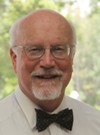
Mark E Smith
Bio chemistry
University of Texas Medical Branch, USA -
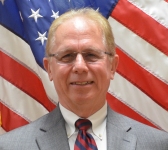
Lawrence A Presley
Department of Criminal Justice
Liberty University, USA -

Thomas W Miller
Department of Psychiatry
University of Kentucky, USA -
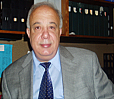
Gjumrakch Aliev
Department of Medicine
Gally International Biomedical Research & Consulting LLC, USA -
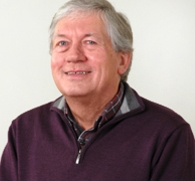
Christopher Bryant
Department of Urbanisation and Agricultural
Montreal university, USA -

Robert William Frare
Oral & Maxillofacial Pathology
New York University, USA -

Rudolph Modesto Navari
Gastroenterology and Hepatology
University of Alabama, UK -
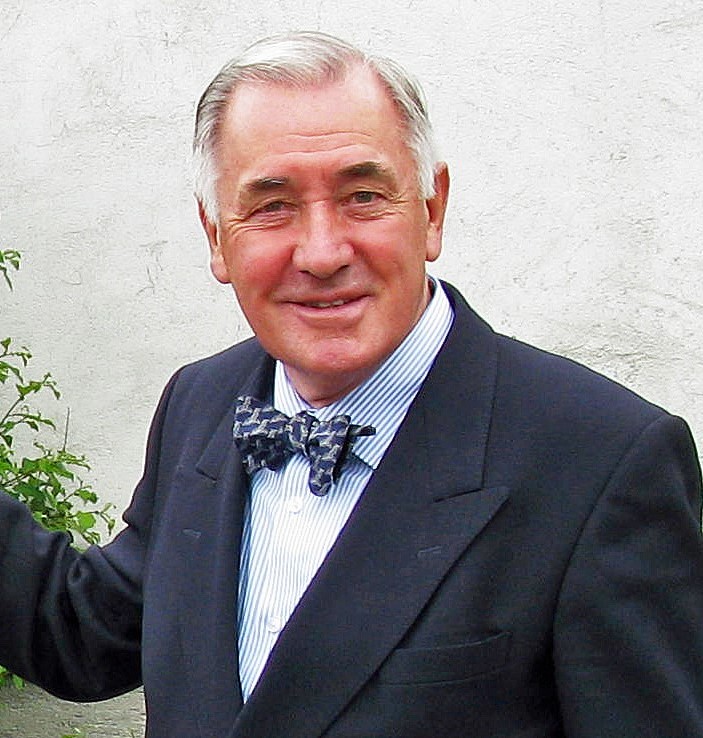
Andrew Hague
Department of Medicine
Universities of Bradford, UK -
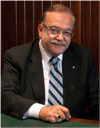
George Gregory Buttigieg
Maltese College of Obstetrics and Gynaecology, Europe -

Chen-Hsiung Yeh
Oncology
Circulogene Theranostics, England -
.png)
Emilio Bucio-Carrillo
Radiation Chemistry
National University of Mexico, USA -
.jpg)
Casey J Grenier
Analytical Chemistry
Wentworth Institute of Technology, USA -
Hany Atalah
Minimally Invasive Surgery
Mercer University school of Medicine, USA -
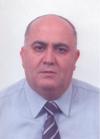
Abu-Hussein Muhamad
Pediatric Dentistry
University of Athens , Greece

The annual scholar awards from Lupine Publishers honor a selected number Read More...





